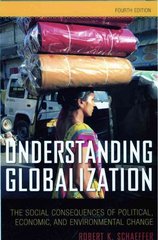Assap tutors
a) Show that, with flexible prices, the natural level of output can be written as IT = TY,9t o+Ye Briefly explain how and why a reduction in government spending causes a fall in output in this flexible price model. (Hints: start by combining equations 4, 5, 6 and 8. Also note that the real wage is constant in the flexible price model given the constant marginal product of labor). b) The full sticky price model can be simplified to 3 equations (and equation (10)): Eljet - the = (1 - Exit - 190 (1 - D)(1 - p)g.) (11) it = BE(#1+1) + ky (12) (13) Using the method of undetermined coefficients, find the response of the output gap and inflation to an exogenous decrease in g, when prices are sticky and monetary policy follows the Taylor Rule above. Guess that the solution for each variable is a linear function of the shock g. Is the fall in output larger or smaller in this sticky price model (than in part (a))? Explain. c) Instead of following the Taylor Rule above, monetary policy is now set optimally. Derive the optimal monetary policy rule under discretion. Assume the steady state is efficient. (Hint: As in class, assume that the loss function has quadratic terms for the output gap and inflation, with a relative weight v on the output gap). What is the optimal path for output and inflation following the reduction in government spending? d) Suppose the monetary policymaker wants to implement the optimal policy from part (c) using an interest rate rule for 4. The policymaker is considering a rule which sets is equal to "(1 -I)(1 - p)9:, the natural real interest rate in this model. Briefly explain why this will not work. Furthermore, suggest a modification to the proposed rule that would successfully generate the outcomes in part (c). (Hint: you do not need to derive anything. You should be able to answer this from your knowledge of the model) e) Now consider two modifications to the model: (i) government spending provides utility where the utility function is: + xlog Go - (ii) the decrease in govern- ment spending is initially used to lend money to households rather than to cut taxes (although, over time, the government reverses this policy and cuts lump sum taxes later). Discuss how these changes might affect your answers in parts (a) and (b). YouQuestion 4 (20 points) This question considers a variant of the standard New Keynesian model where the government can now purchase a basket of goods Gr, which is completely funded by lump sum taxes. Assume that G, is not productive and does not provide utility. The linearized conditions are given below. In percentage deviations from steady state: & is consumption, w, is the real wage, it is hours worked, y is output, of is real marginal cost and g, is government spending. In deviations from steady state: , is the nominal interest rate, # is inflation. of is the output gap (relative to the model with flexible prices): 0: = the - 95. Households (3) (4) Firms w = d (6 ) it = BE (#+1) + ky (7) " and w come from household preferences. 1/o is the elasticity of intertemporal substi tution and v is the inverse of the Frisch elasticity. 1. Government spending, g, follows an AR(1) process gt = pgt-1 + et (10) where et is i.i.d. and 0 S p )-4-20 where o is the probability that a firm cannot adjust its price.c) Assume o = 1. Using guess and verify, find the policy functions for investment, consumption, hours worked and output and show that these are independent of Of-1 (Hints: Guess that consumption and investment are a constant share of output. You will also find it casier to combine various equilibrium conditions from part (a) before applying the guess and verify method). How, and why, do TFP shocks affect output, consumption, investment and hours worked in this model? d) Now consider the possibility that o > 1 (rather than o = 1). By inspecting the relevant household equilibrium conditions from part (a), discuss how this might affect the dynamics of consumption following a TFP shock. You do not need to re- solve the model, just provide the relevant economic intuition based on the equilibrium conditions. e) Briefly explain how you would solve this model using Value Function Iteration. Make sure you mention any additional challenges that are specific to this model and how you might deal with them. For simplicity, assume labor supply is inelastic.Question 3 (20 points) Consider the following decentralized real business cycle model. The representative household has preferences over consumption and leisure. Expected lifetime utility is: 1+ 1 (1) where C is consumption and N is hours worked. These preferences include a form of habit formation and the "habit stock", He, is simply equal to consumption in t - 1: He = Ct-1. h governs the importance of habits and 0 Sh










